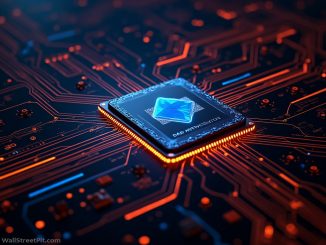
Nvidia‘s (NVDA) ambitious leap into the next generation of AI with its Blackwell architecture hit a significant snag due to a design flaw, pushing back the expectations of tech giants and investors alike. Initially, Blackwell was set to redefine AI computing with promises of up to 30 times the performance of its predecessor.
However, the discovery of this flaw late in the production process meant that companies like Microsoft (MSFT), Google (GOOG), and Meta (META), which had placed orders worth “tens of billions of dollars,” faced delays.
The flaw, rooted in the complexities of integrating seven different types of chips designed from scratch, underscored the challenges of innovating at the bleeding edge of technology.
Nvidia CEO Jensen Huang acknowledged the issue, stating that the design flaw in the Blackwell chips, which are meant to be the cornerstone for generative AI, had to be addressed with their longtime Taiwanese manufacturing partner, TSMC (TSM). This partnership proved successful as the issue was resolved, paving the way for Blackwell’s deployment in the fourth quarter. Initially, Nvidia had projected shipments for the second quarter.
This hiccup, however, did more than just delay product launches; it spotlighted Nvidia’s market position.
With nearly complete dominance in the data center GPU market, Nvidia could afford this pause to ensure their product’s integrity without immediate threats from competitors. The Blackwell chips, once ready, are expected to generate significant revenue, with projections soaring over $10 billion from initial sales, despite the reduced per-unit pricing from initial rumors.
The resolution of the Blackwell issue not only reaffirms Nvidia’s commitment to quality but also highlights the intricate dance between innovation, manufacturing, and market expectations in the tech world.
As the company moves forward, the Blackwell architecture, named after the esteemed mathematician David Blackwell, aims not just to meet but exceed the demands of AI computation, potentially setting new benchmarks in the industry.
This episode in Nvidia’s journey underscores a broader narrative in tech: the road to innovation is often fraught with unforeseen challenges, yet it’s the response to these challenges that shapes market leaders.
Price Action:
Nvidia lost 0.72% during Wednesday’s pre-market hours and changed hands at $142.70, decelerating its monthly gain to about 23%.
- Bulenox: Get 45% to 91% OFF ... Use Discount Code: UNO
- Risk Our Money Not Yours | Get 50% to 90% OFF ... Use Discount Code: MMBVBKSM
Disclaimer: This page contains affiliate links. If you choose to make a purchase after clicking a link, we may receive a commission at no additional cost to you. Thank you for your support!




Leave a Reply